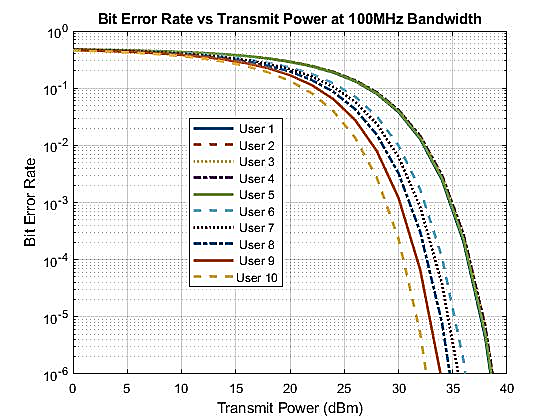Improving 5G uplink spectral efficiency using massive multiple-input multiple output and non-orthogonal multiple access
Keywords:
Massive Multiple Input Multiple Output, Non-orthogonal Multiple Access, Zero Forcing, Maximum Ratio Transmit, Minimum Mean Square ErrorAbstract
This paper investigates the integration of massive multiple input multiple output (MIMO) architecture with non-orthogonal multiple access (NOMA) technology. The primary objective is to address the growing demand for higher data rates by extending communication frequencies into the millimeter wave (mmWave) band while simultaneously enhancing system spectral efficiency in the uplink (UL). The uplink (UL) operation of massive MIMO–NOMA was considered, where the base station (BS) is equipped with massive antenna array that uses hybrid precoding of Zero Forcing (ZF), Maximum Ratio Transmit (MRT) and Minimum Mean Square Error (MMSE) to reduce the number of required radio-frequency (RF) chains without performance loss, less hardware cost and Signal Interference Cancellation to mitigate against far and near problem. A comprehensive system model and mathematical framework for massive MIMO-NOMA are developed and implemented using MATLAB software. The power coefficient and fading factor was generated using Monte Carlo simulation. It was observed that at the UL, the issue of user performance relative to their proximity to the base station is effectively addressed. However, the weakest user (user1) outperforms the strongest user (user10) at transmitting power of 20dBm by 18%. Other findings reveal that User6 and user8 outperform user10 by 45% in terms of best capacity, even when user10 is physically closer to the base station. These results were obtained using QPSK modulation. In summary, combining massive MIMO and NOMA holds great potential for improving uplink (UL) performance, particularly in millimeter-wave (mmWave) communication scenarios.


